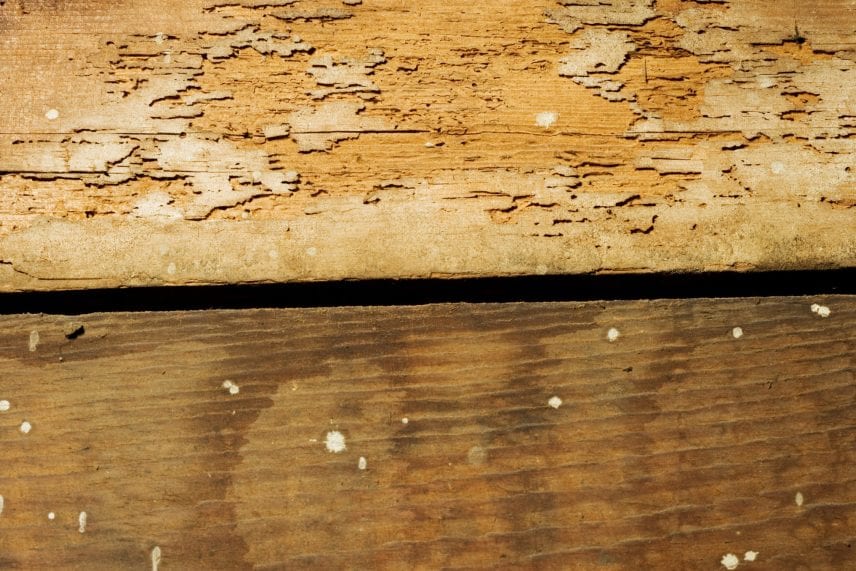When people think of infestations, they think of cockroaches and ants. Those are important pests to consider.
But you should also consider termites. Termites cause five billion dollars in damages every year. Some species can eat for 24 hours a day, seven days a week, causing incredible damage.
Termite damage is significant. They don’t just leave unseemly droppings on your kitchen floor. They can destroy your home if you don’t know the dangers and signs of termite infestation.
Get acquainted with those dangers and you can stop an infestation right after it starts. Here is your quick guide.
Dangers of a Termite Infestation
In nature, termites are incredibly useful. They break decaying trees and branches down, freeing up space for new plants to grow.
But termites do not distinguish between the wood found in forests and the wood found in your home. They burrow up from the dirt into your foundation. They eat the wood there, compromising the entire structure of your home.
Termites can also get inside your house. They can eat at furniture, doors, and window frames.
Termite damage occurs without noise. Most damage occurs beneath your home or in your walls, so you can’t notice it happening. By the time you do find the damage, it is very extensive.
Unlike most pests, termites do not carry diseases that can harm humans. But certain species can bite you. This can cause your skin to swell and turn red.
Frass is the feces of termites, which is usually made of wood powder. It can cause an allergic reaction when it touches the skin. It can also release particles into the air, causing coughing and sneezing.
The insects build their nests out of the soil. This can spread bacteria into your home. They can also carry mold inside, exacerbating asthma and lung diseases.
Many termite pesticides are dangerous to humans. Some people try to take care of termites themselves, only to ingest or splash pesticides in their faces. You should not take to a termite nest by yourself.
Termite Infestation Signs
The first thing you can do to stop termites is familiarizing yourself with the signs of an infestation. You can notice one in its early stages, but you must be diligent. Head into your basement, then go outside and look around the base of your house.
Termites create tunnels of mud to connect their homes to food sources. Check around the bases of tree trunks. If you notice a tube made of dirt, you likely have termites.
The insects attack wood bit by bit. Look for tiny holes around the bottom of wooden objects. They may be small, so use a magnifying glass and a strong light source.
Frass looks like sawdust, but thicker and cylindrical. Take a look at your flooring, especially along the walls. Finding frass is a telltale sign that you have an infestation.
Termites are attracted to light sources. Go to your basement windows and the gaps between doors. Aim a flashlight there and you may find some termites walking around.
You can find dead termites, though they are hard to see. Check bathtubs and sinks since many termites drown in small pools of water.
The insects eat wood from the interiors of objects out. Head to your foundation and tap it with the back of a screwdriver. If it seems hollow, you probably have termites.
Less common signs include blisters in your wood and windows that are hard to close. These signs indicate an advanced infestation. The pests have entered your home and are consuming all surfaces.
What to Do if You Have Termites
You should call a termite infestation service as soon as you find termites. You should not treat them yourself. Even if you avoid harming yourself with pesticides, you will not be able to kill all of the insects.
Schedule an appointment right away. In the meantime, check the foundation and internal structures of your home. If the wood is not solid, you should notify the service and call a foundation repair company.
Pest controllers will need to go inside and around your home. Clear away paths so they can access your basement and areas of dirt outside. Point out places where you have found nests.
If the controllers are treating multiple floors in your home, you should leave it. Grab your belongings and stay with someone else for a few days. The controllers need to be thorough and toxic chemicals can remain in the area for a period of time.
You can return home when the controllers say you can. Avoid cleaning the surfaces they treated. Stay out of the basement and away from the foundation for a week.
Once the air has cleared, get repairs to your wooden surfaces. A damaged foundation can collapse in on itself long after termites leave. You may need to remove soil around your home so pests cannot enter in.
Be diligent. Check your foundation once a month and inspect all wooden objects in your home. Be prepared to call the exterminators back.
Get Help for a Termite Infestation
A termite infestation can be truly devastating. Termites eat wood at the foundation of homes. They can compromise your home’s integrity while spreading particles into the air.
There are many signs of an infestation. You can notice their mud tunnels or their bite marks. You may find damaged objects, especially in your basement.
Call a termite pest control service right away. Let them spray all surfaces so insects throughout your home get killed.
Find an eco-friendly and intelligent company. Pointe Pest Control is Eastern Pennsylvania’s leading pest control service. Contact us today.


